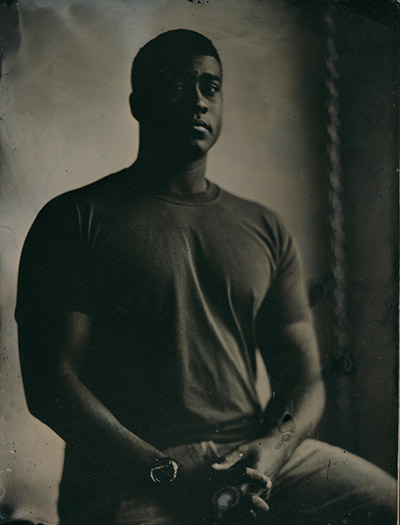
Ed Drew
Ed Drew, an American artist and photographer, brought back to life the tradition of making tintypes in the Afghanistan combat zone – a process of developing photos that was practiced during the American Civil War. His new approach to an age-old method is seen in his famous combat zone tintype album. It’s like a book of people’s stories, and the photos have appeared in such magazines as TIME, The Guardian, The New Yorker and many others. Ed’s wartime photography reflects his deep desire to understand people and to show their uniqueness and beauty.
Note on tintypes:It is a wet-plate collodian process where underexposed images are produced chemically on thin plates of darkened iron metal – darker portions of an image look lighter in a negative, so a dark background makes the negative image appear as a positive.
When did you feel your passion for art and photography?
My passion for art was always there. Since I was a little boy, I made things out of wood, wrote poetry, and drew on my wall. Photography came when I got my first camera. That was a Minolta Maxxum, SLR, with a zoom lens. I begged my mother for it.
Why did you choose tintype photography?
I didn’t choose tintypes to look different or creative. The look of the photo and the process of working with people defined my choice.
I also like the process of creating photographs as much as I like the end results. If you look at my hands, you will see silver nitrate stains. Silver nitrate is very caustic. It corrodes my skin. The look of my hands means that I’ve involved myself into this process. For me, making the plate and developing the photo are magical because I can see the real physical change in this world. It’s a chemical change: I’m taking one thing and adding something else to it. The process of tintype photography is so real. That’s why I chose it.
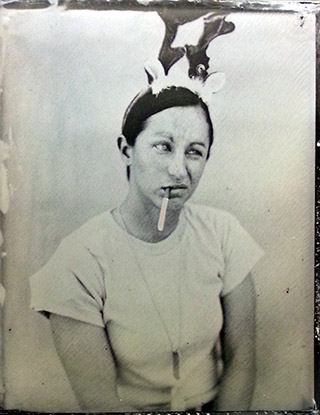
.jpg)
Do mistakes occur often with tintypes?
With tintypes, the process is very slow, and you can make a lot of mistakes. You have to be involved because one mistake with a tintype can destroy the entire photo. You have one chance to do it right or you mess it up. But the imperfections don’t make a tintype photograph bad, they actually enhance the final image.
Here we can find a good analogy for life. These days, people strive to be perfectionist and they miss the whole point of life because life is not about perfectionism, but about living. For me, the process of making tintypes reflects this principle of life. Tintypes allow a photographer to enjoy the process and to accept the imperfections.
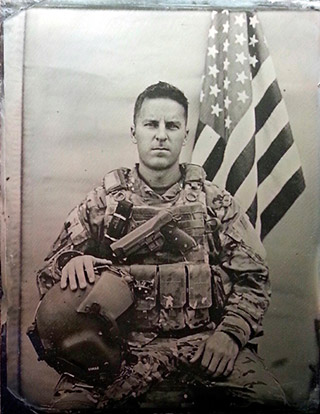
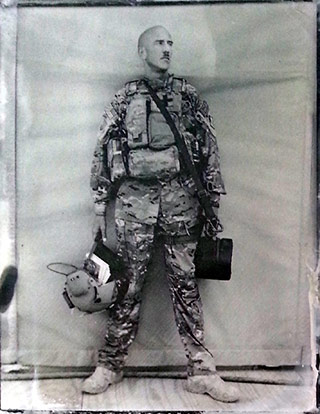
How could you describe your style of tintype photography?
I have influence from Japanese artists such as Rinko Kawauchi and Daido Moriyama, so I like a lot of negative space in my photographs. Negative space is the area around or between the subject of the photograph – not the subject itself. It plays an important role, but they are not areas of the image where you would think to look first. What matters is the amount of space in which the subject has to breathe. I want my photos to be stark and minimal to make the person on it hold weight.
Why did you decide to portray soldier’s portraits instead of war scenes?
The war is about people. Everyone thinks of war as the event, but many forget that there are people fighting the war. Even a family member can say, “My brother is in the marines.” Does that define who he is? Maybe he likes to write poetry! People have a tendency to place soldiers into this machine – the war machine.
My project is about people with whom I was close during the war. If something had happened to me, they would have been the last people to have been with me. My second son was born in January, and I wanted him to know the people who were the closest to me during that difficult time. If I had been killed, through these photographs and the individual’s stories, my son would know who was with his father at the end. These photographs are autobiographic because they tell the stories about the people in my life.
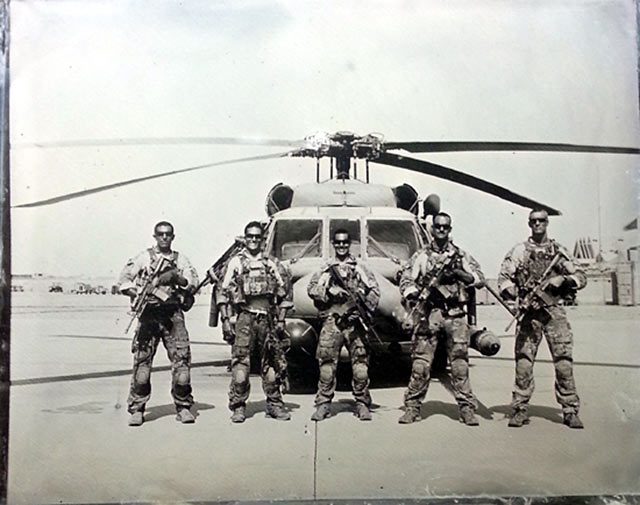
Pararescuemen
How do you decide on what to focus?
If people want to make a funny face, then I will focus on their face. If they want to show their gear and equipment or to show how strong and direct they are, then I will focus on their body. I base the focus on what kind of personal image they want to share. Sometimes they don’t even know what they want me to photograph and my job as a photographer is to understand them without them telling me. I have to be able to read their body and the silent language it speaks. For example, someone may want to sit in a particular position. Then I read the person’s posture and understand that, for instance, it is a position that shows how powerful he or she is. Now I have just the camera to depict it.
Do photographs help you to see people with a new different perspective?
Tintypes make you slow down. We are constantly moving in time, so we are never the same. In the photograph, you’ve taking the moment, and now you have time to work with it – to really look at it. This face – it’s not moving around. You are not distracted by the movements of their eyes or the words coming from their mouth. Everything is right there and you can only take it for what it is. Accepting it, you start to understand the smile or the way the eyes look. Photographs are very much about acceptance of a situation. You have no choice. You can’t change that photograph.
.jpg)
.jpg)
“I see war
Even here
When I’m away from war
How sad.”
What did you mean?
Is that a poem? Oh, that’s one of my poems?! (Laughing)
People fight with each other even when they are not at war, and that is what scares me the most. War makes sense because you are going to fight for some reason, but I can’t understand why people are attacking each other when they are in peace. It makes me sad. There should no reason people should ever be mean to anyone!
People don’t realize how blessed they are to have this life. One day in a war is long enough to tell yourself that every day is o.k. to die, so you start thinking about what is important to you. The only thing which, I realized, matters is that I can make somebody’s life better.
.jpg)
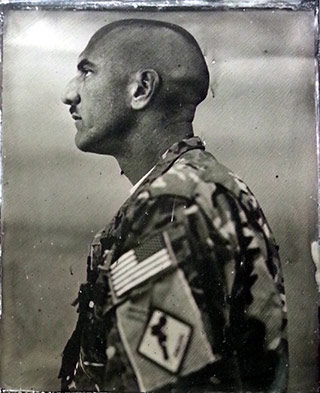
Are you going to continue using this technique?
I’ll use the technique because I like it, but not because I feel it necessary for the things I photograph. I’ll use tintypes if I want to show the humanity of a person ONLY!
How do you see your future?
My future … It’s weird. (Laughing)
I want to explore people more. The future of my photographs is going to be more about the dialog with people – people who I know and who become a part of my life.
By Elena Mariakhina
All photos: © 2013 Ed Drew. All rights reserved. Courtesy of the Robert Koch Gallery, San Francisco

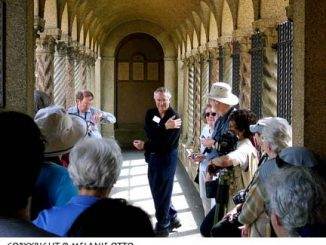
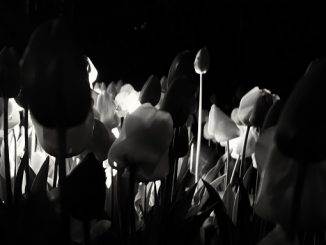
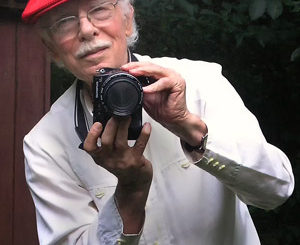
Leave a Reply